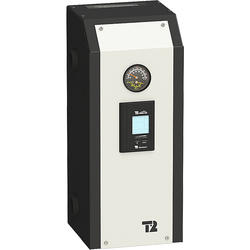My hyper-allergic wife insists upon ripping up the berber carpet in the master bedroom of our vacation place, and replacing it with that fake-hardwood vinyl flooring. Nothing I can do about it. But it's an opportunity - to replace the existing electric baseboard heat with radiant floor heating. But I know nothing about radiant floor heating, so hoping I can be enlightened.
The first issue is where to how to run the pipes. I'll be starting with the bare subfloor (plywood or wafer board) after the carpet is removed. I'm sure it doesn't work to just lay the fake hardwood on top of the pipes. So how would it be done ? There's easy access from the basement immediately below, so does it maybe make sense to put the pipes below the sub-floor ?
The second issue is how to heat the water. Probably just electric resistance. Natural gas is not available, and around here propane is generally more expensive, per btu, than electric. Another option is a heat pump water heater; but those are quite expensive, and I don't think the installation cost versus operating cost works out for a place that's occupied maybe 10% of the time. So does it even make sense, trading electric resistance in the baseboard units for electric resistance heating of the subfloor water ? I suspect it does; the radiant effect, as we wood-burners are well aware, is much more effective at providing sense-able heat.
I'd be grateful for peoples' thoughts !
The first issue is where to how to run the pipes. I'll be starting with the bare subfloor (plywood or wafer board) after the carpet is removed. I'm sure it doesn't work to just lay the fake hardwood on top of the pipes. So how would it be done ? There's easy access from the basement immediately below, so does it maybe make sense to put the pipes below the sub-floor ?
The second issue is how to heat the water. Probably just electric resistance. Natural gas is not available, and around here propane is generally more expensive, per btu, than electric. Another option is a heat pump water heater; but those are quite expensive, and I don't think the installation cost versus operating cost works out for a place that's occupied maybe 10% of the time. So does it even make sense, trading electric resistance in the baseboard units for electric resistance heating of the subfloor water ? I suspect it does; the radiant effect, as we wood-burners are well aware, is much more effective at providing sense-able heat.
I'd be grateful for peoples' thoughts !



